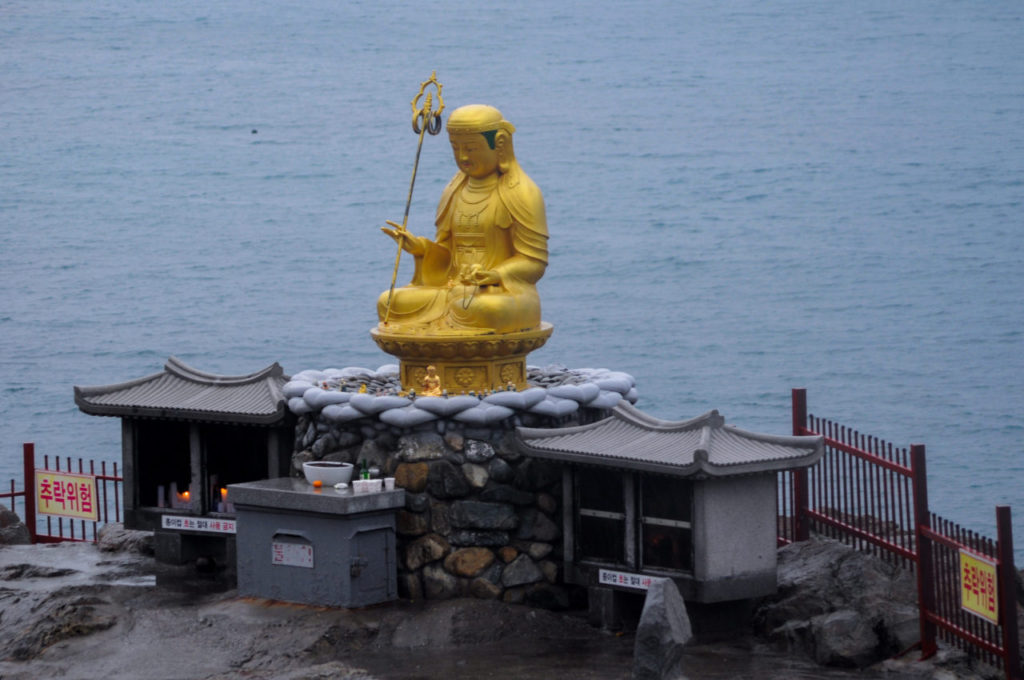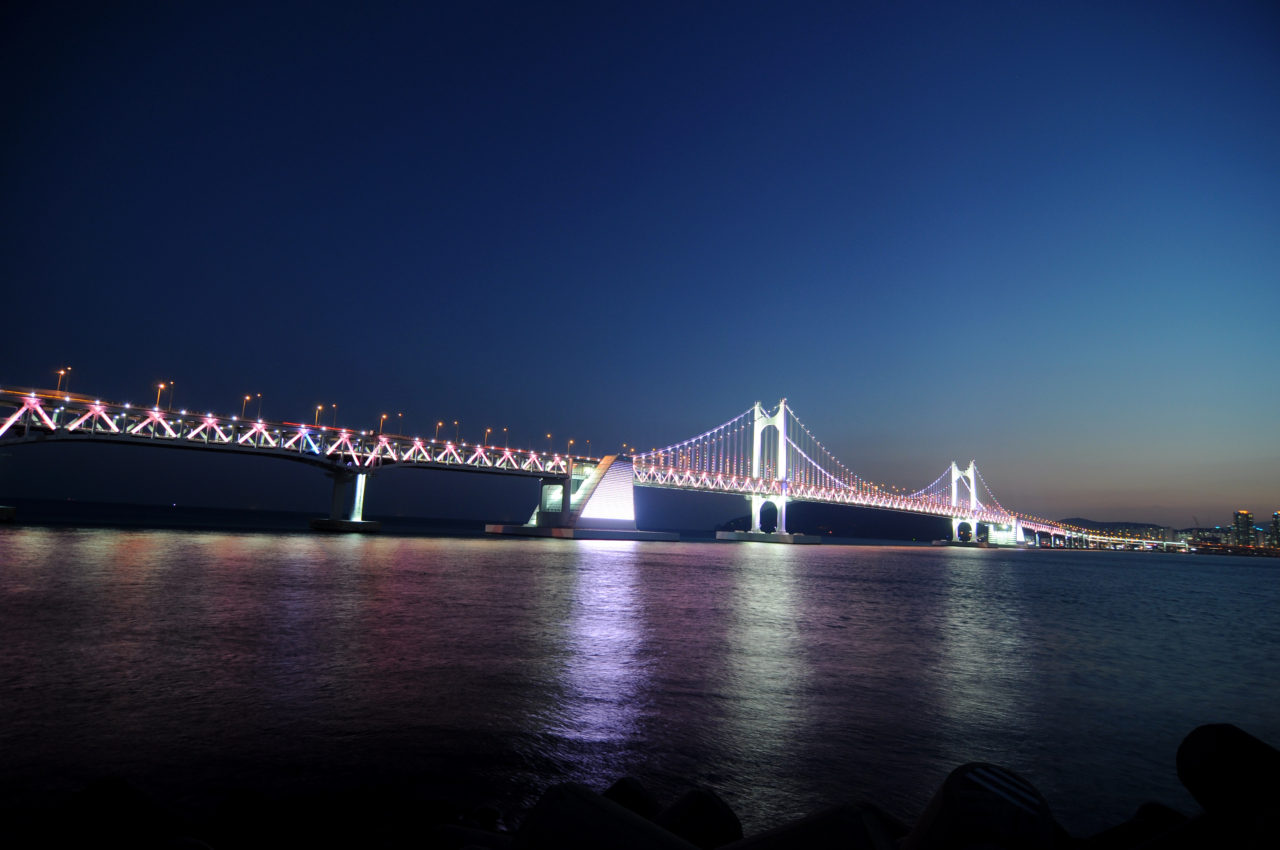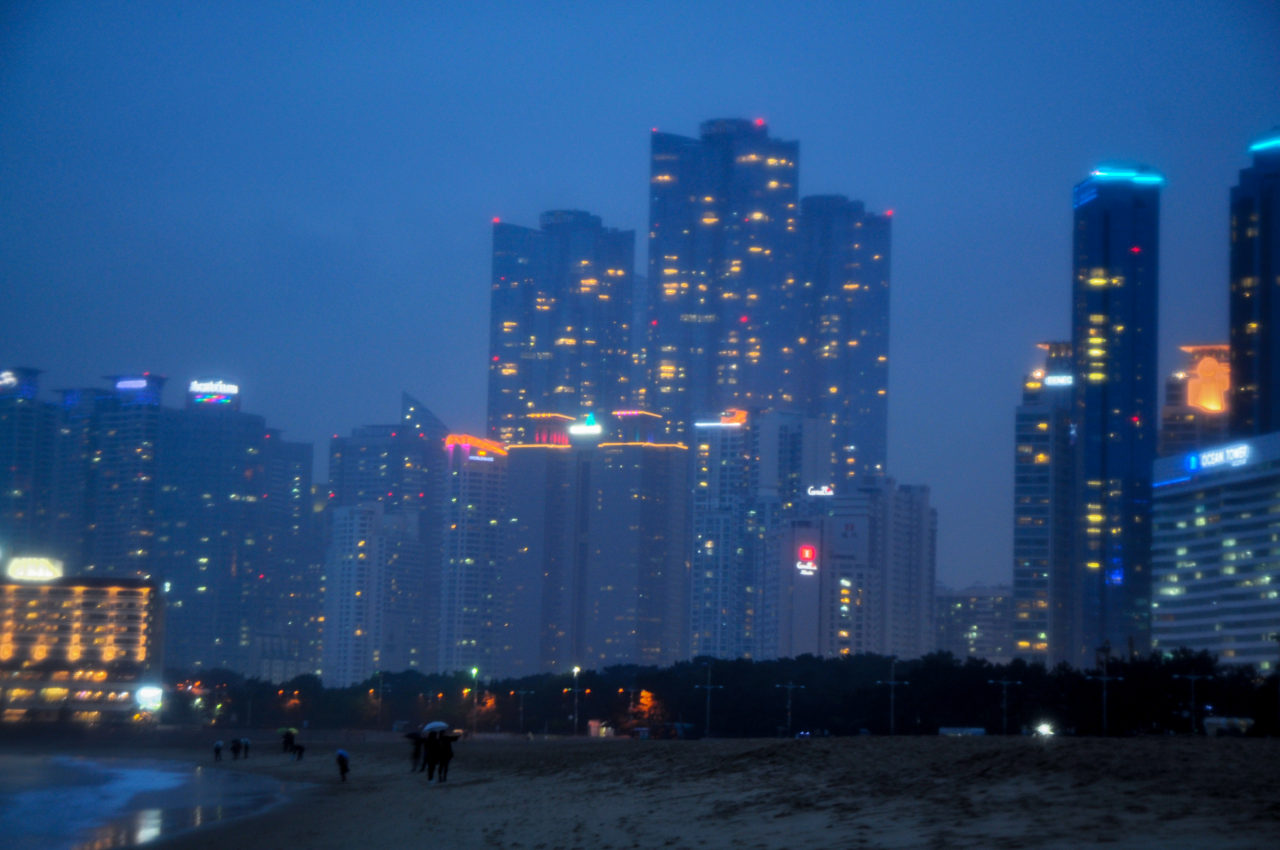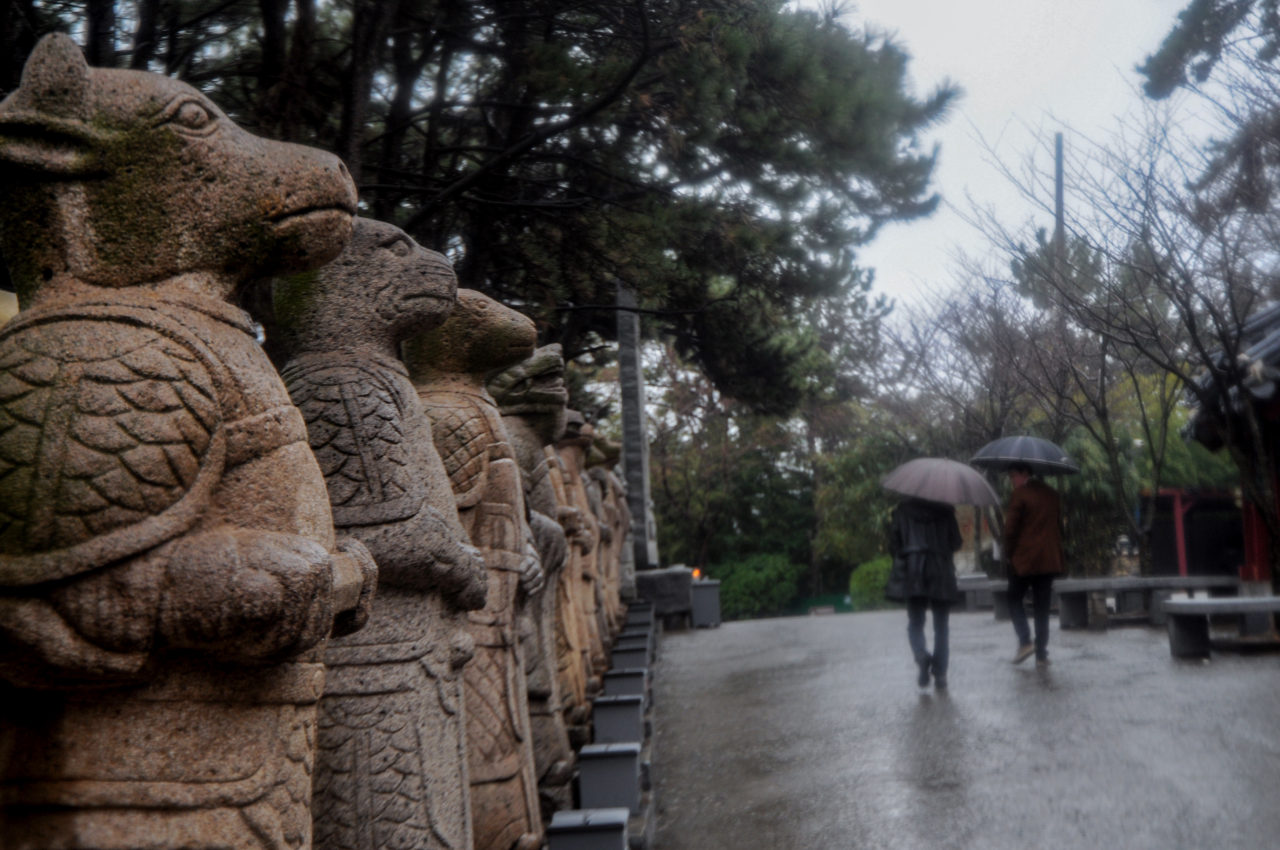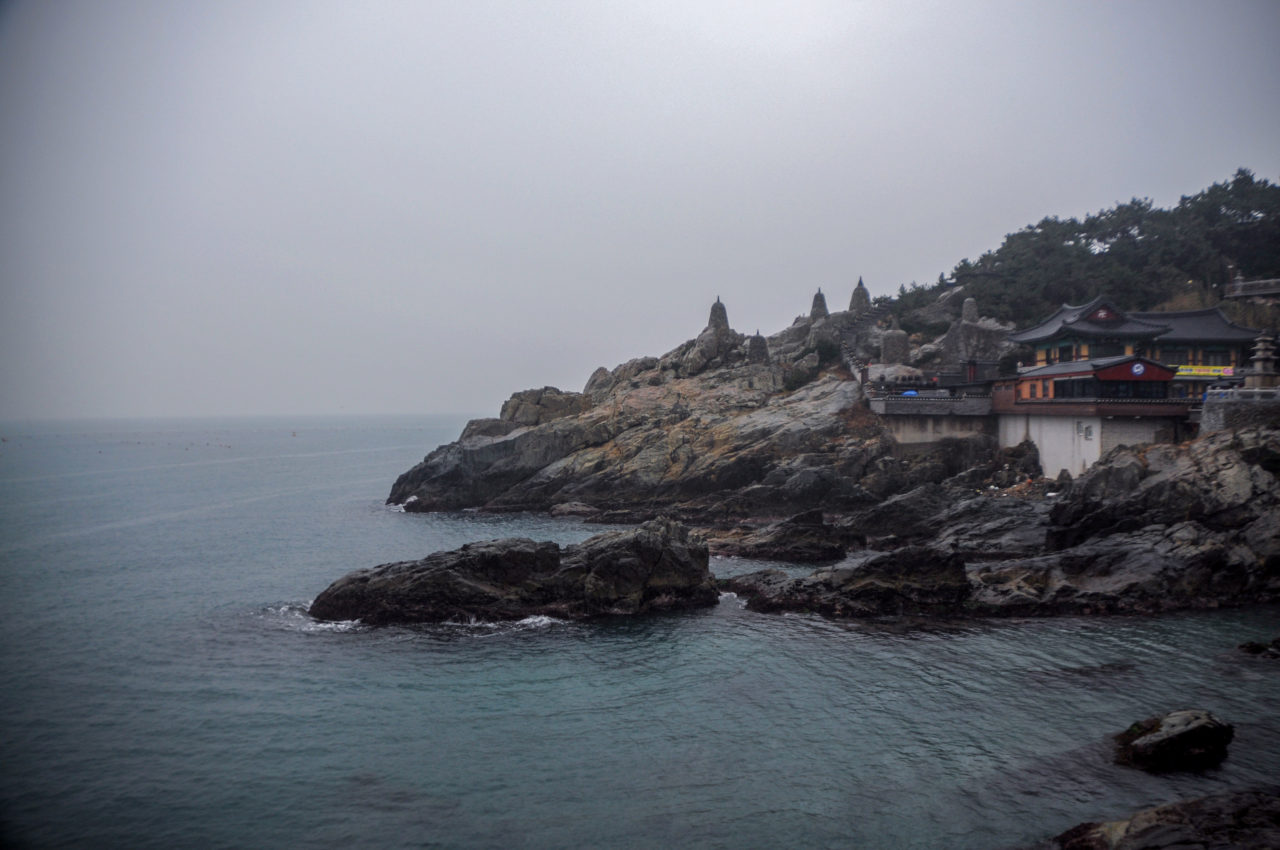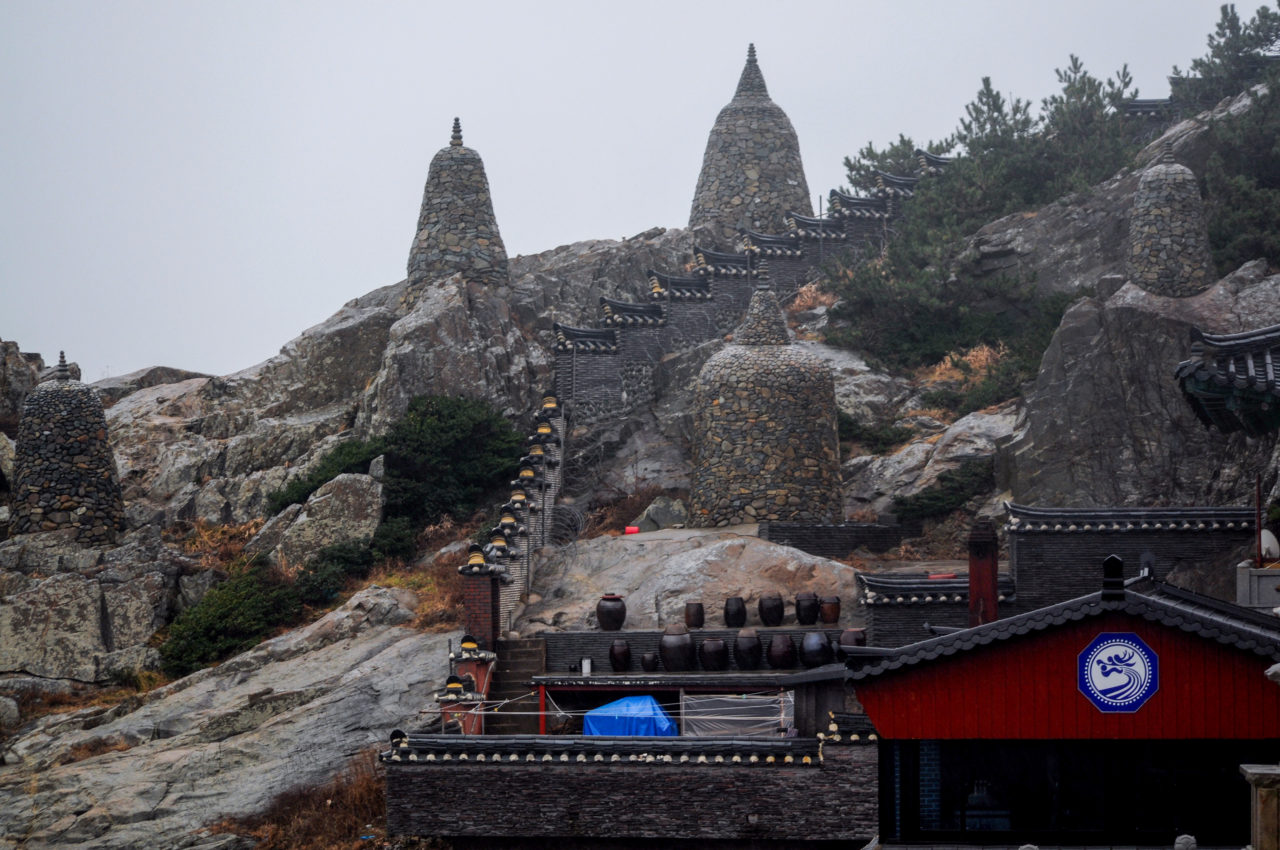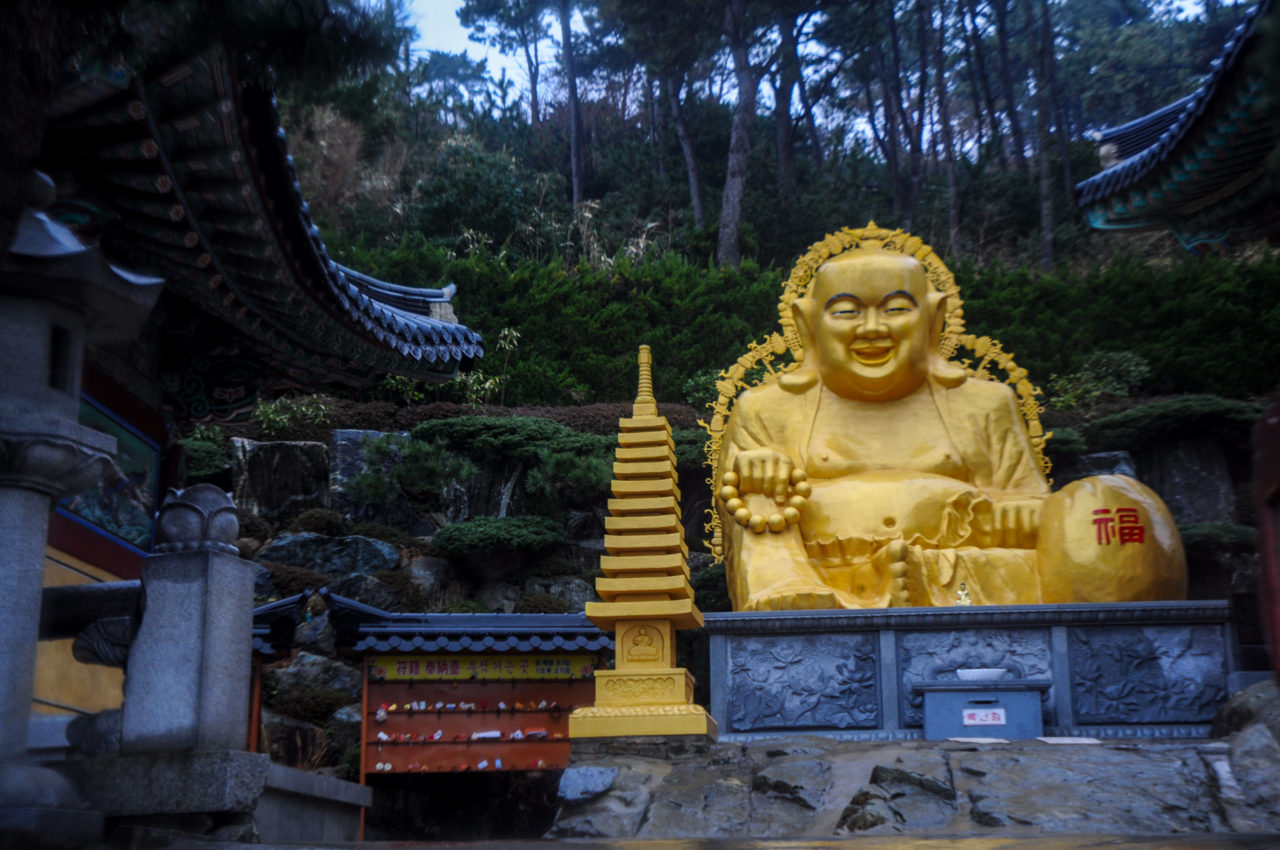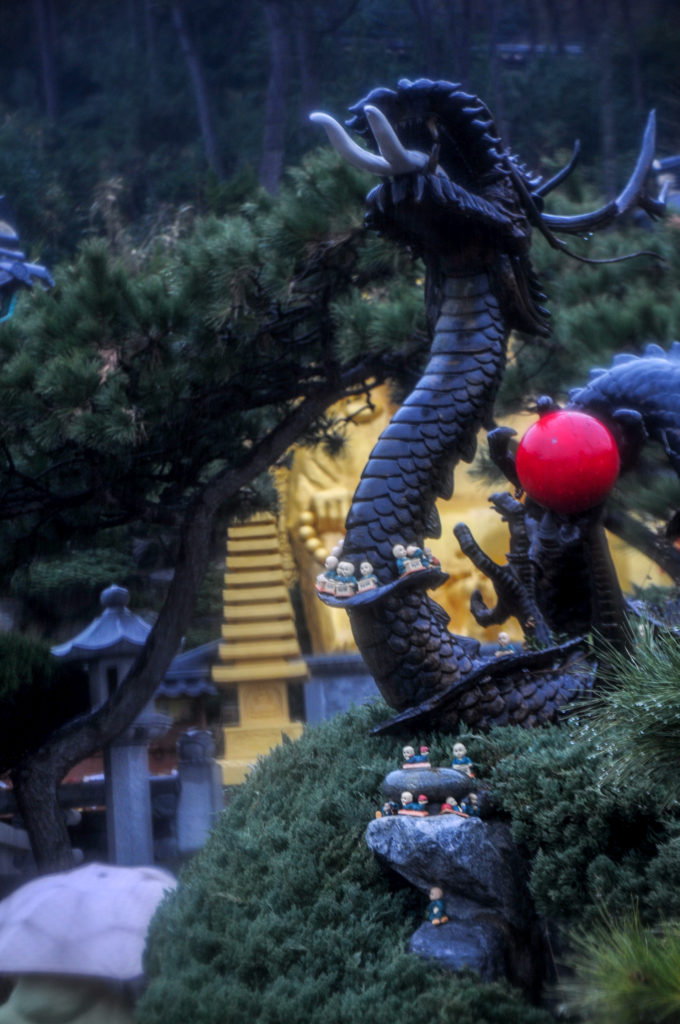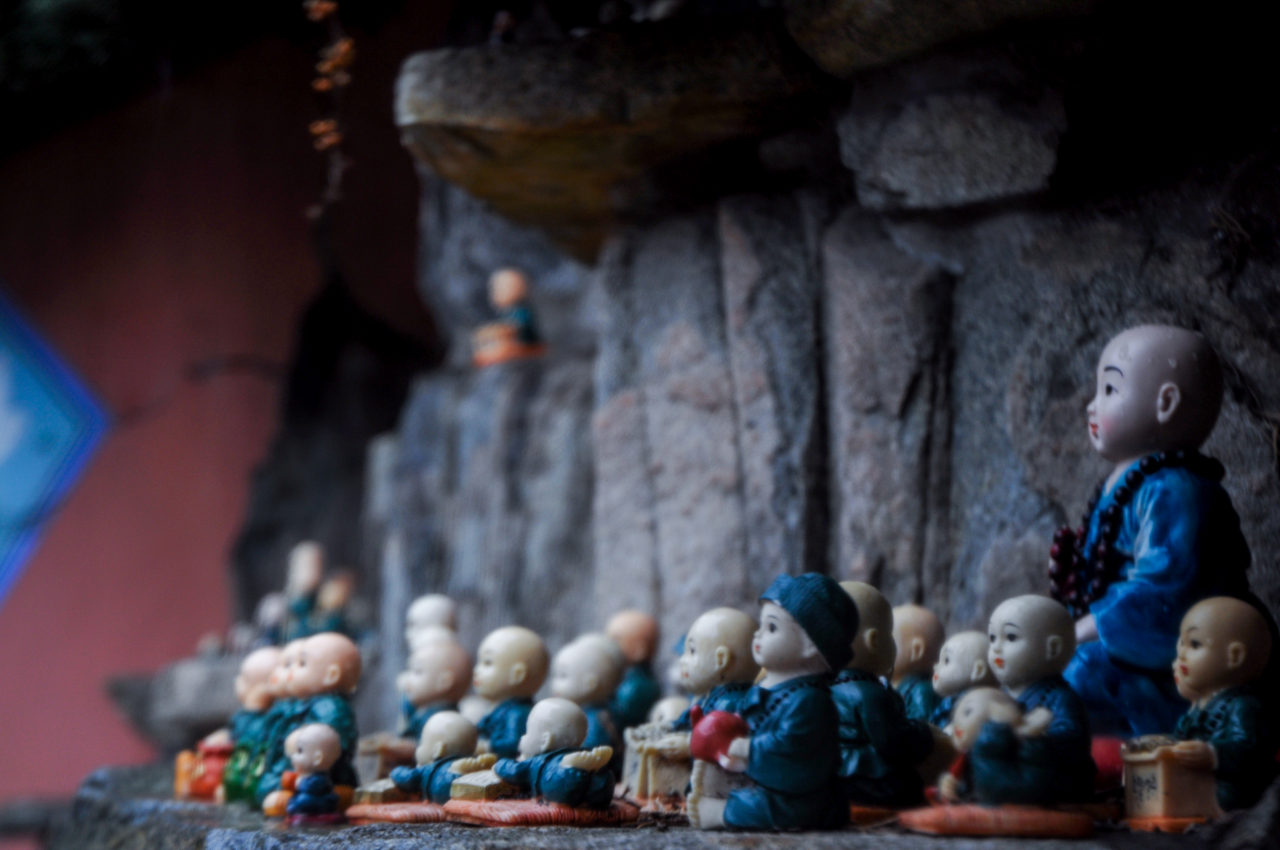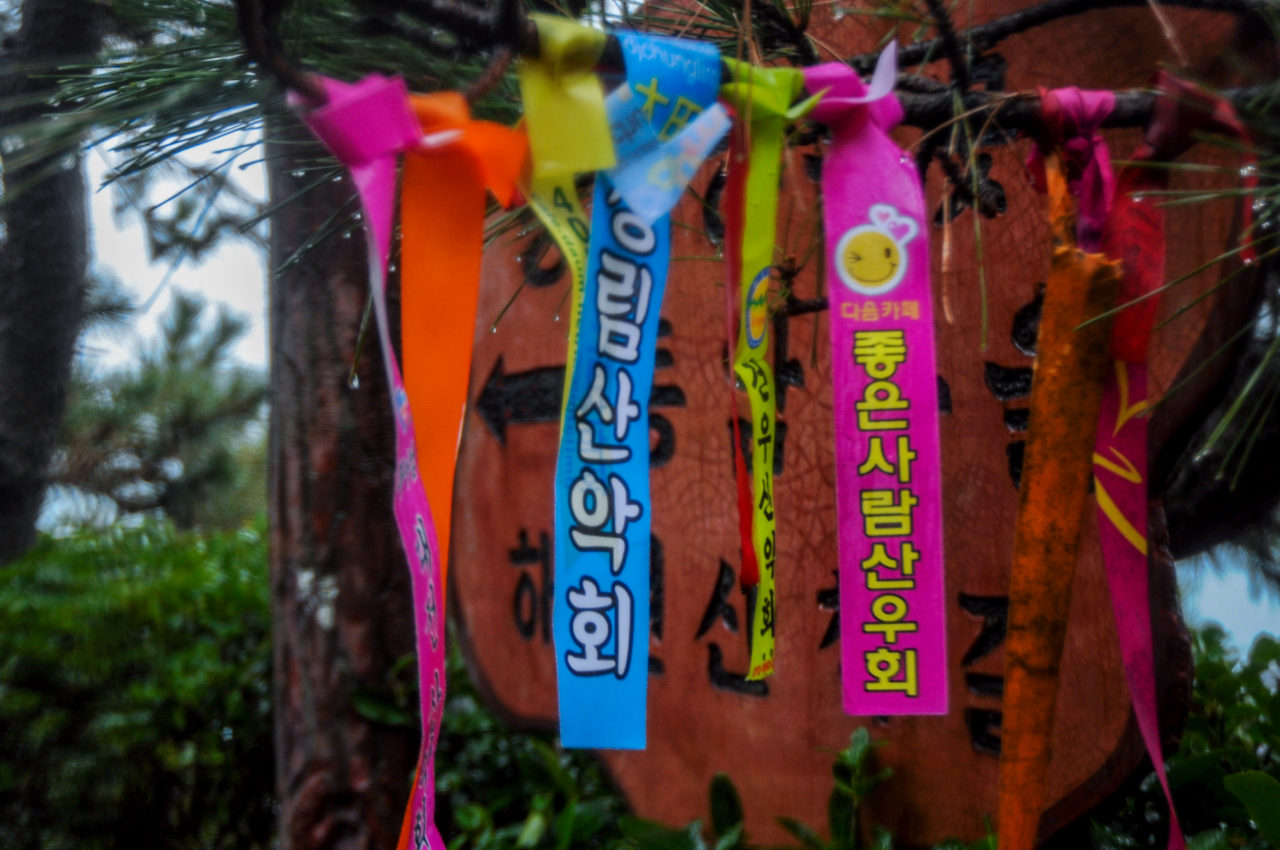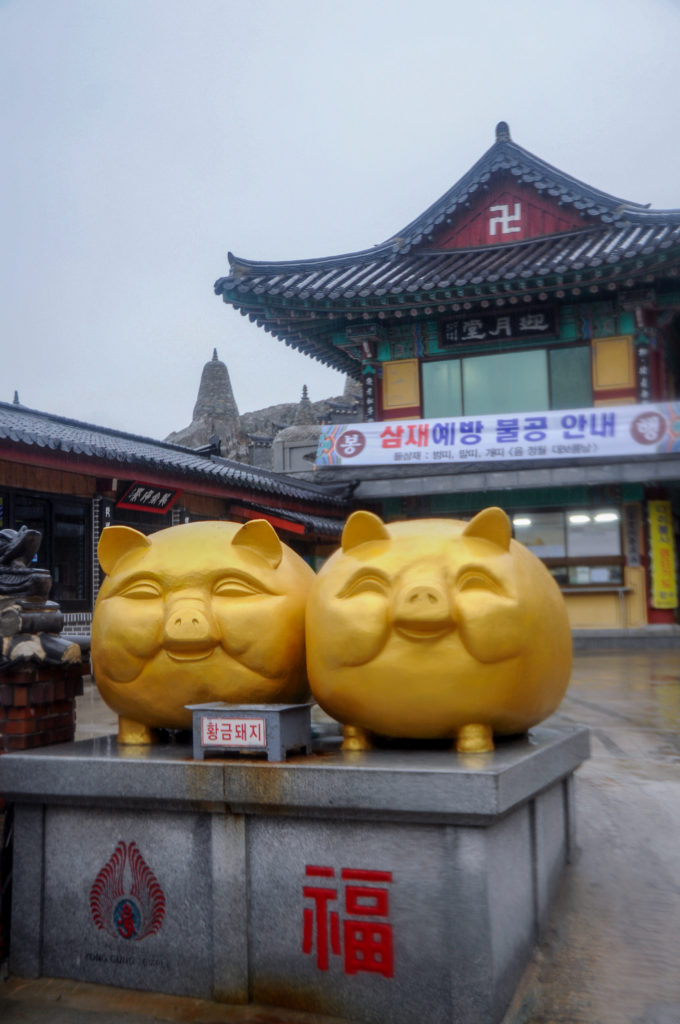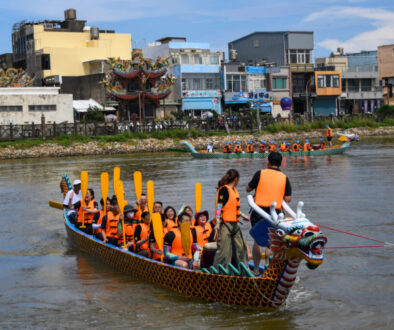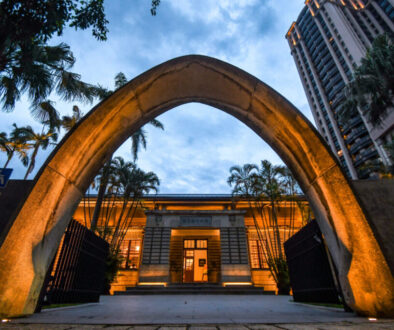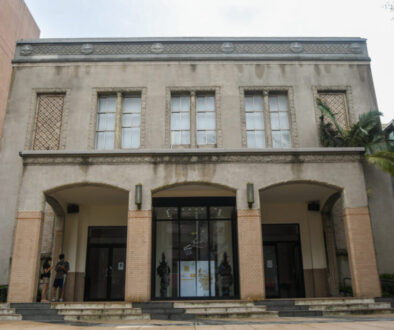Busan’s Temple by the Sea: Haedong Yonggungsa
City by the Sea
It’s not just the iconic Haedong Yonggungsa Temple that is by the sea. The entire glistening futuristic city of Busan towers over the Korean coastline. Looking like a scene from a cyberpunk film, twinkling skyscrapers are usually the last thing you would expect to see while strolling down a sandy beach. Especially during the winter months, traveling through Busan is almost like walking through the set of Blade Runner rather being than your typically seaside holiday.
Eventually, you will want a break from the ultra-urban scenes and the shade cast from the buildings blocking the sun while you are trying to enjoy the beach. One of the most popular escapes from the sprawling city of Busan is to follow the coast to a temple where the ocean waves are literally crashing against its walls. Images of the Haedong Yonggungsa Temple have turned the monastery into a place of legendary proportions. A restless sea beating against a tranquil temple.
Wanting to get off the beaten path in Korea? Be sure to check out Seoul’s E-sports culture!
Escaping Busan
Bus 181 from Haeundae Station (1,300 Won) is your ticket to getting out of the massive city of Busan. The urban scenes will drastically change into thick woods and mountains lining the coast. What was once a bustling metropolis transforms into a landscape full of jagged rocks, rustic fishing villages, and a restless sea. You may be tempted not to head directly towards the touristy temple of Haedong Yonggungsa. The sleepy villages and moody weather create that perfect kind of atmosphere for wandering the coastline of Busan.
There are several shrines and seaside hikes you can do around the temple. But eventually, you will realize that nothing can quite compare with Haedong Yonggungsa. You will find rows of zodiac guardians immortalized in stone greeting you as you approach the temple. The forest paths and ornately decorated caves will give you a sense of how unique this temple is well before the trail ends at the rocky roost of Haedong Yonggungsa.
Thinking of going north of the border? Read about traveling to North Korea here!
The Water Temple
Hearing the crash of waves, seeing the rolling mist in the trees, and watching the raindrops trickle down the beaming golden face of Buddha transports the entire Haedong Yonggungsa Temple into a world straight out of Korean folklore. After visiting the temple with such dramatic weather, you could never imagine seeing the stone stupas and dragon statues in any other light. A blue sky and rays of the sun almost seem unfitting for a temple defying the rule of the sea.
Other than the location of the Haedong Yonggungsa Temple, the rest of the grounds are quite ordinary. For those who have lived or traveled in Asia for quite some time, the gold-painted statues and grand halls of the monastery are nothing that will wow you up close. The most stunning thing about this entire area is to take a look at the temple from afar and watch the waves beat against the terracotta-roofed shrines.
Curious about what the DMZ is like from North Korea? Read about traveling to Kaeson in the DPRK here!
Out of the Ashes
Haedong Yonggungsa may have just recently become a tourist’s pilgrimage, but this coastal temple has a history stretching back nearly a thousand years. During the Goryeo Dynasty in 1376, Buddhism was experiencing a decline in Korea. Widespread famine and lack of rain led people to turn their backs on their gods. The Master Naong Hyegeun was told in a vision from the goddess of the sea that if he was to build a temple on the foot of Bongrae Mountain, peace would return to Korea.
The temple was constructed along the jagged coastal rocks and mountainside according to the rules of Korean Feng Shui or Pungsu-Jiri. Dedicated to the goddess of mercy, the temple saw centuries of being torn down and rebuilt in accordance with Buddhist tradition.
It was during the Japanese occupation when the monastery fell into ruin. Being burnt down to the grown, it wasn’t until 1974 that a new temple was built on the ashes of Naong Hyegeun’s pagoda. After the goddess of mercy appeared riding a dragon in a dream to a monk, the temple was finally restored to its former glory and renamed Haedong Yonggungsa.
Wondering what rural North Korea is like? You can read about Sariwon here!
The Dragon Temple
With storm clouds brewing overhead, you will find that there is no better time to visit this remote seaside temple. Having nearly the entire monastery to yourself, you are free to explore the Buddhist caves, ferocious dragon statues, and halls of the temple. With blue skies, you are sure to have to fight through crowds of selfie-stick wielding tourists taking cringe-worthy photos in front of the golden pigs and stone stupas.
The scenes of the Haedong Yonggungsa from a distance are far more stunning than when you begin to approach the temple. Sitting on top of the rocks while watching the sea break against the shrines is far more memorable than actually wandering the grounds of the monastery. If you manage to avoid the tour groups, you will not find a more spiritual experience than staring over the Korean coast, listening to the sea roar and the temple bells chime.

